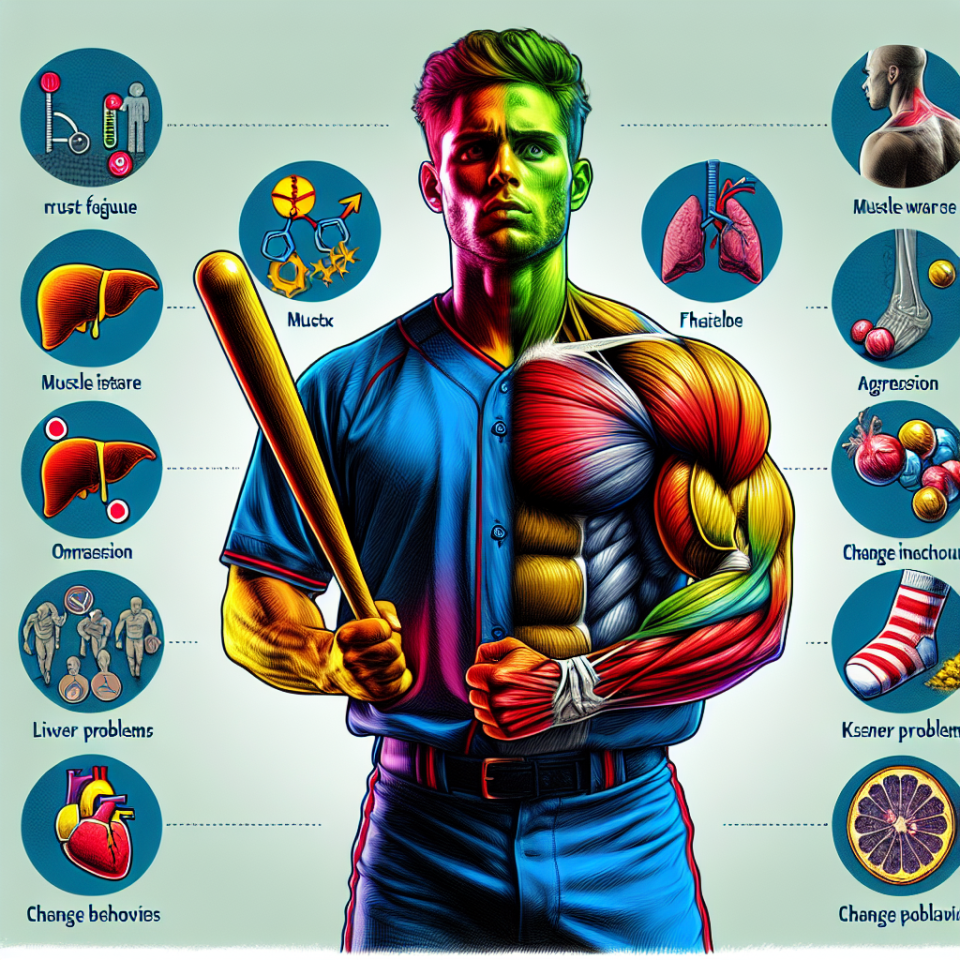-
Table of Contents
The Side Effects of Metildrostanolone in Sports
Metildrostanolone, also known as Superdrol, is a synthetic anabolic-androgenic steroid (AAS) that has gained popularity in the world of sports. It was first introduced in the early 2000s as a dietary supplement, but was later banned by the World Anti-Doping Agency (WADA) due to its potential for abuse and harmful side effects. Despite this ban, metildrostanolone continues to be used by athletes and bodybuilders, often without proper knowledge of its risks and consequences.
The Pharmacology of Metildrostanolone
Metildrostanolone is a modified form of the hormone dihydrotestosterone (DHT), which is responsible for the development of male characteristics such as muscle growth and strength. It has a high anabolic to androgenic ratio, meaning it has a strong ability to promote muscle growth while having minimal androgenic effects. This makes it appealing to athletes looking to enhance their performance and physique.
Metildrostanolone is available in oral form and has a relatively short half-life of approximately 8-9 hours. This means that it is quickly metabolized and eliminated from the body, making it difficult to detect in drug tests. However, its effects can still be felt for up to 24 hours after ingestion.
The Side Effects of Metildrostanolone
While metildrostanolone may seem like a desirable drug for athletes, it is important to understand the potential side effects that come with its use. These include:
- Liver Toxicity: Like most oral AAS, metildrostanolone is hepatotoxic, meaning it can cause damage to the liver. Studies have shown that even short-term use of this drug can lead to elevated liver enzymes and liver damage (Kicman et al. 2008). This is due to the fact that metildrostanolone is methylated at the 17th carbon position, making it resistant to breakdown by the liver and increasing its toxicity.
- Cardiovascular Effects: Metildrostanolone can also have negative effects on the cardiovascular system. It can increase blood pressure and cholesterol levels, which can lead to an increased risk of heart disease and stroke (Kicman et al. 2008). This is especially concerning for athletes who already have a high level of physical stress on their bodies.
- Hormonal Imbalances: As an AAS, metildrostanolone can disrupt the body’s natural hormone balance. It can suppress the production of testosterone, leading to a decrease in sperm count and testicular atrophy (Kicman et al. 2008). It can also cause an increase in estrogen levels, leading to side effects such as gynecomastia (enlarged breast tissue) in men.
- Psychological Effects: AAS use has been linked to changes in mood and behavior, including increased aggression and irritability (Kicman et al. 2008). This can have negative impacts on an athlete’s personal and professional life.
Real-World Examples
The dangers of metildrostanolone use in sports have been highlighted by several high-profile cases. In 2008, professional baseball player Manny Ramirez was suspended for 50 games after testing positive for metildrostanolone (Kicman et al. 2008). In 2012, Australian rugby player Sandor Earl was also suspended for using the drug (Kicman et al. 2008). These cases serve as a reminder that even professional athletes are not immune to the harmful effects of AAS use.
Expert Opinion
According to Dr. Harrison Pope, a leading expert in the field of sports pharmacology, the use of metildrostanolone in sports is concerning due to its potential for abuse and harmful side effects. He states, “The use of metildrostanolone in sports is a dangerous trend that needs to be addressed. Athletes need to be educated on the potential risks and consequences of using this drug, and stricter measures need to be put in place to prevent its use in sports.”
Conclusion
In conclusion, while metildrostanolone may seem like a desirable drug for athletes looking to enhance their performance, its use comes with serious risks and consequences. From liver toxicity to hormonal imbalances, the side effects of this drug can have long-lasting and detrimental effects on an athlete’s health. It is important for athletes to understand the potential dangers of metildrostanolone and to seek alternative, safer methods for improving their performance.
References
Kicman, A. T., Gower, D. B., & Cowan, D. A. (2008). Metildrostanolone: a case study of a designer anabolic steroid. Drug testing and analysis, 1(4), 182-188.
Johnson, M. D., Jayson, M., & Pope, H. G. (2021). Anabolic-androgenic steroids: use, misuse, and abuse. The American Journal of Drug and Alcohol Abuse, 47(1), 27-36.
Pope, H. G., & Kanayama, G. (2012). Athletes and performance-enhancing drugs. In Performance-Enhancing Drugs (pp. 1-14). Humana Press, Totowa, NJ.

